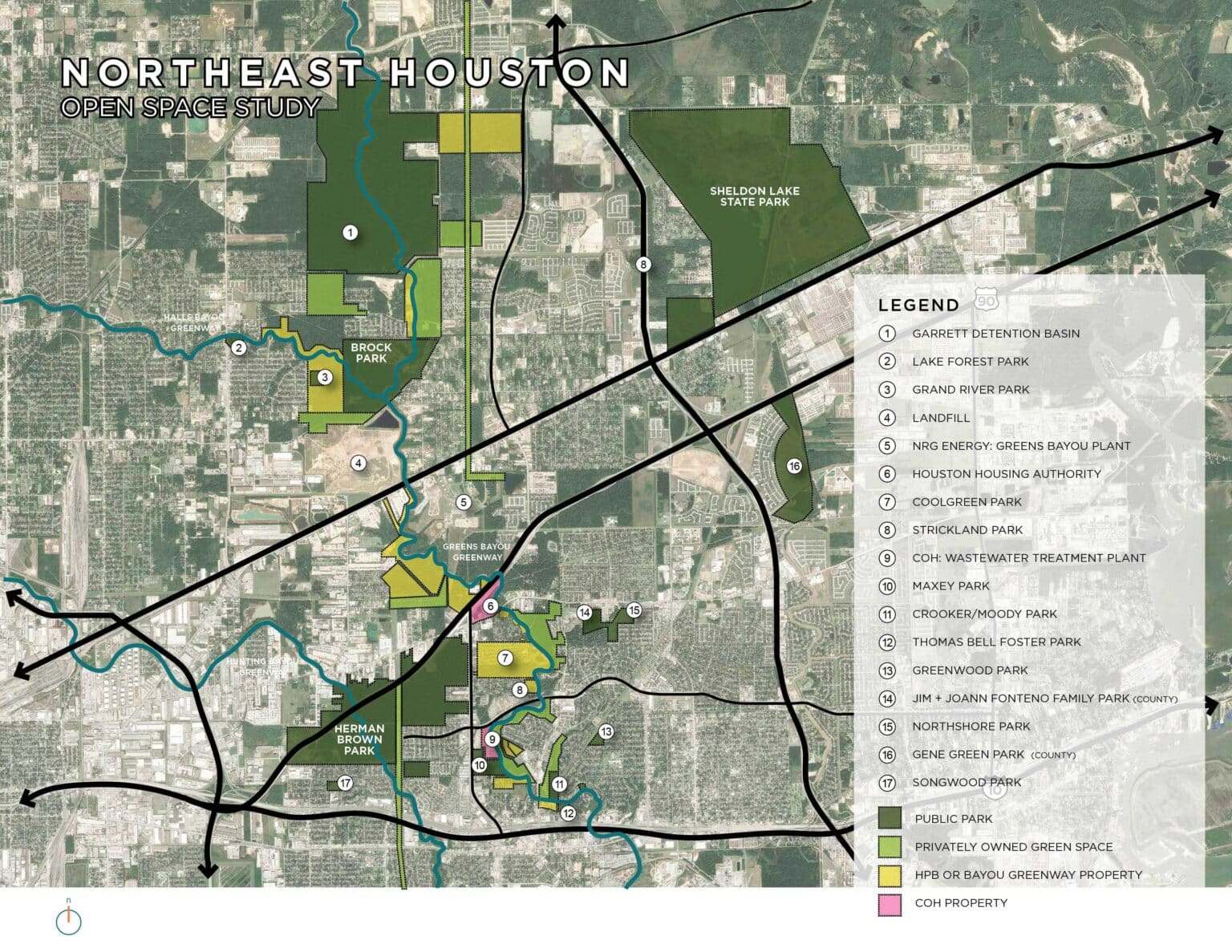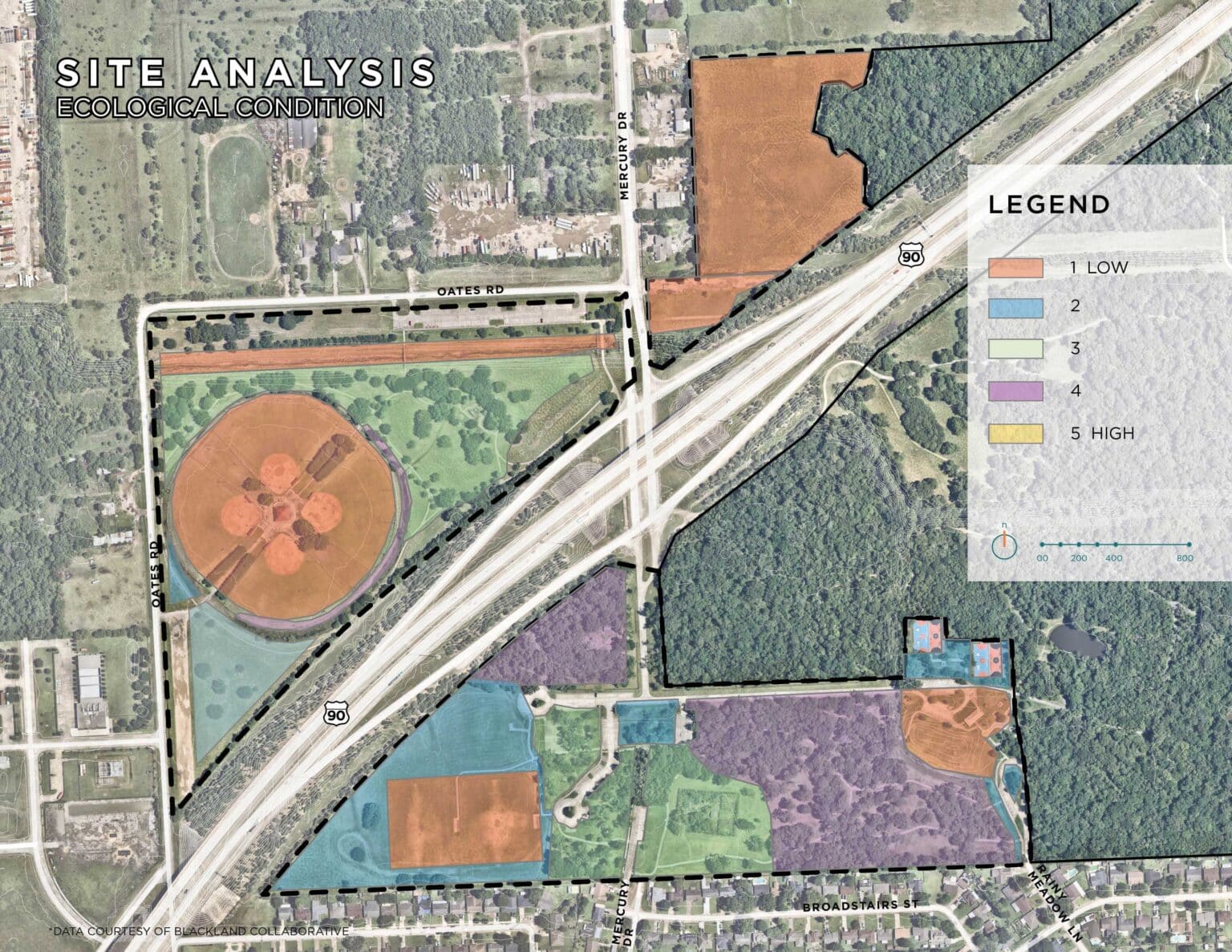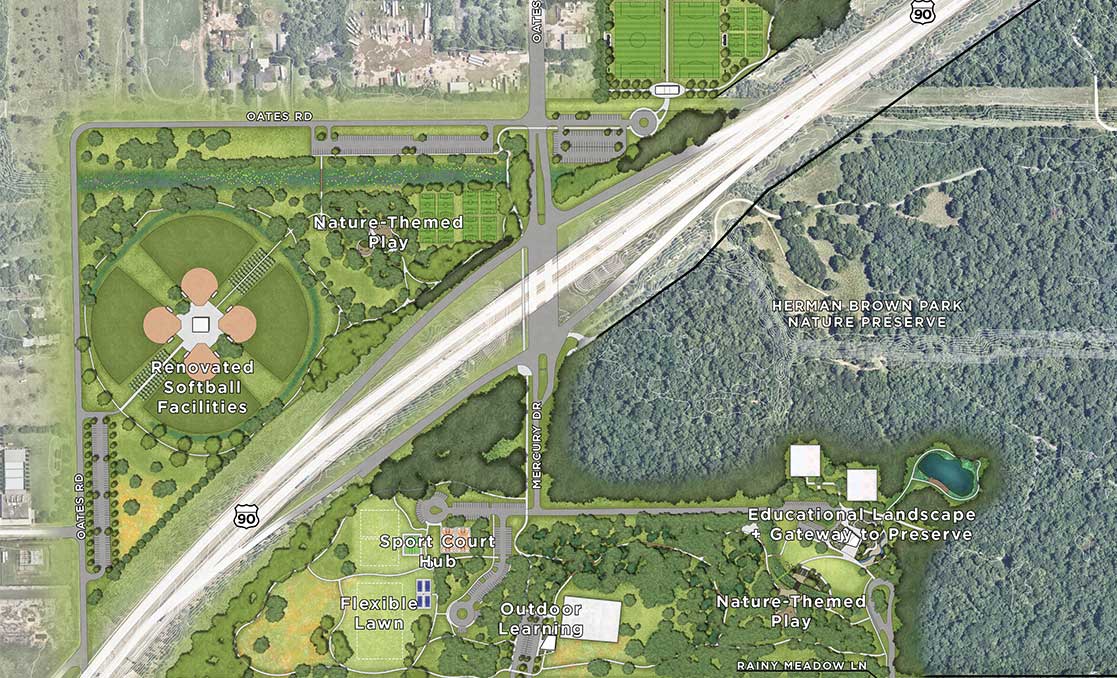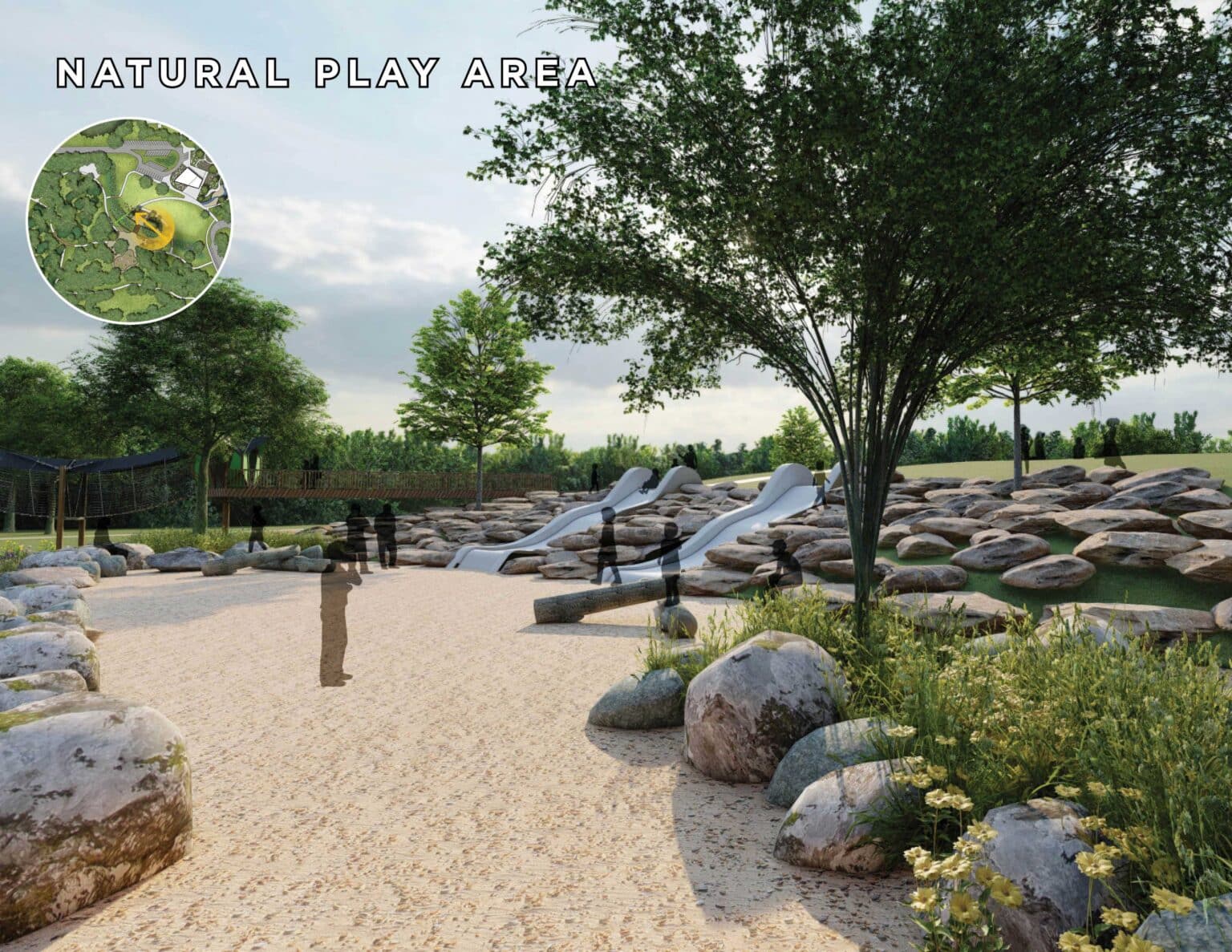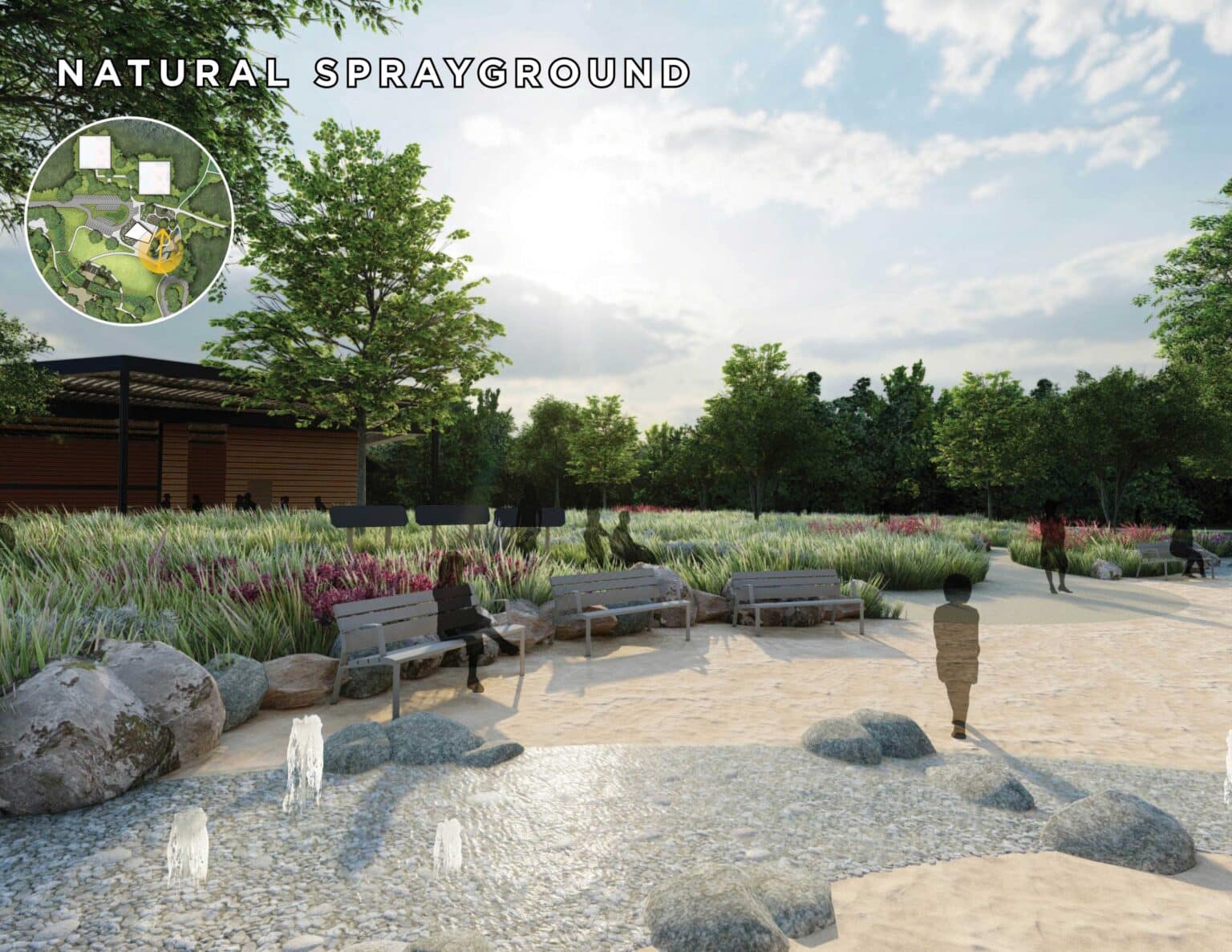- Projects /
- Ecological Restoration & Design Nature Play Design /
- Herman Brown Park Master Plan
Herman Brown Park Master Plan
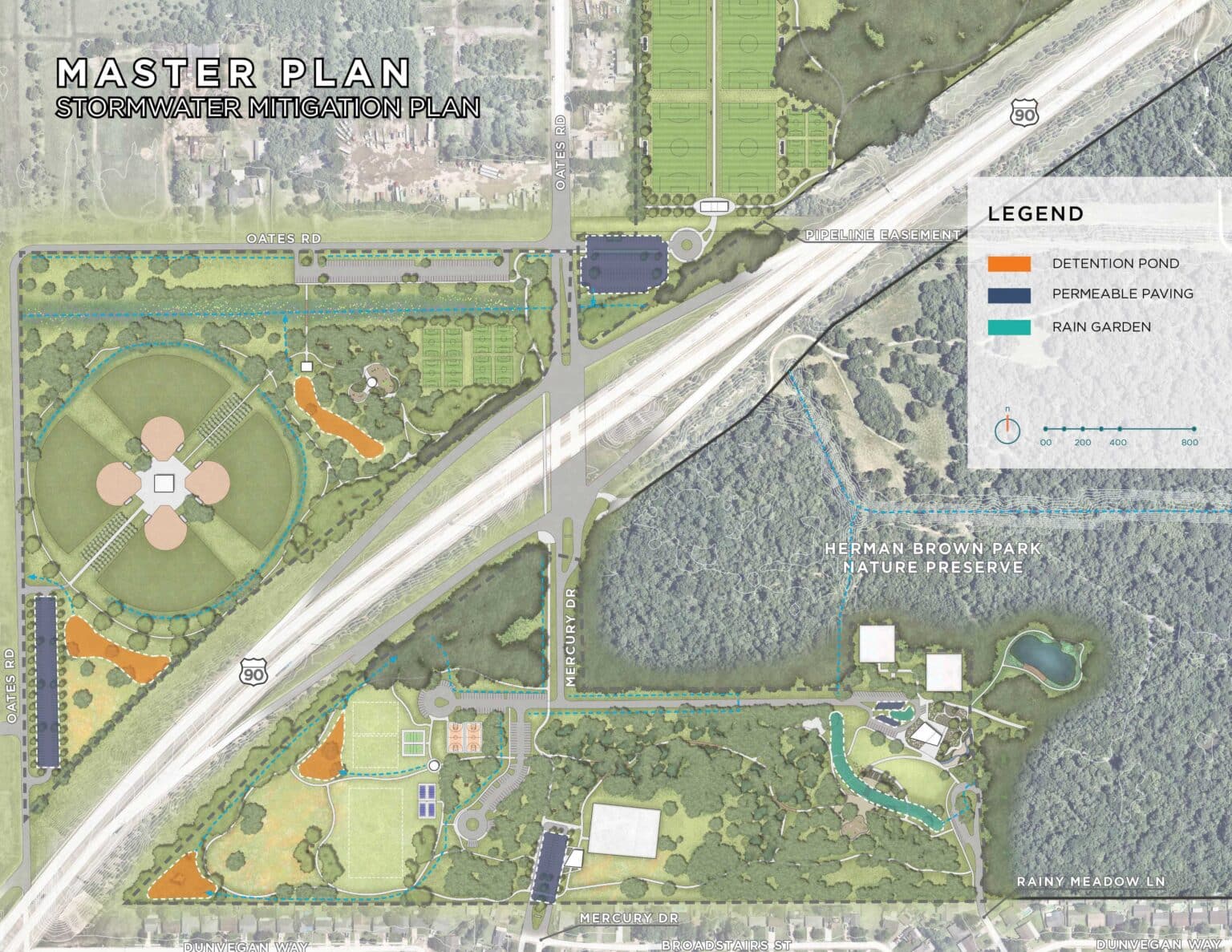
Herman Brown Park was integrated into the Houston park system in 1979 via a generous donation by The Brown Foundation. Over the years, the park has become a favorite place within the community and a vital place of respite. Despite the construction of Highway 90 in 2008 creating a physical divide, the park remains a beloved hub within the community. In 2022 the City of Houston passed a Nature Preserve Ordinance protecting 7,423 acres of natural habitat within city parks.
Herman Brown Park has 640 of its 717 acres designated as natural habitat, safeguarding vital ecosystems, water resources, and a rich variety of native and rare plant and wildlife species. The remaining 47 acres are available to be programmed for active use, providing opportunity for a harmonious blend of recreational and ecological spaces. Continuing their legacy and commitment, the foundation funded a master plan study to look at options to reinvigorate the park, establish unity through enhanced connectivity, and create a plan for future development. The Herman Brown Park Master Plan received the 2024 Houston-Galveston Area Council (H-GAC) Parks and Natural Areas Award in the Planning and Policy category.
Blackland Collaborative carried out an ecological site assessment that revealed the park’s current condition was typical of urban environments, marked by a moderate to poor species diversity and structural integrity primarily due to increased recreation. Rebuilding the ecological quality and protecting existing ecosystems became a top priority for the master plan team. Blackland also helped with additional goals for the plan design including integration of nature play and associated educational elements, connectivity between the northern and southern portions of the park, and improved stormwater mitigation via nature-based solutions. Prairie restoration, stormwater mitigation, and low-impact development initiatives are just a few strategies aimed at improving the site’s ecological resilience. Additionally, strategic plantings and nature play elements are included to foster environmental stewardship and educational engagement. The master plan outlines several recommendations to bolster these efforts: designated planting areas to enhance native vegetation, nature-based solutions to optimize stormwater management and educational elements that encourage community interaction with the environment. By creating a gateway to the nature preserve, the project also aims to improve trail networks and accessibility, ensuring the park remains a resilient and sustainable resource for future generations.In particular, Blackland Collaborative helped navigate the master plan approach for the southern section that serves as a gateway to the nature preserve, introducing increased community-focused spaces that invite exploration and connection with nature. This area is not only pivotal for environmental education but also for mental well-being, offering serene spaces for relaxation and reflection. By improving access to natural areas, the plan ensures that communities can benefit from the park’s restorative environment. Innovative design strategies seamlessly integrate ecological improvements with active recreational areas, creating a park that is both resilient and multifunctional.
